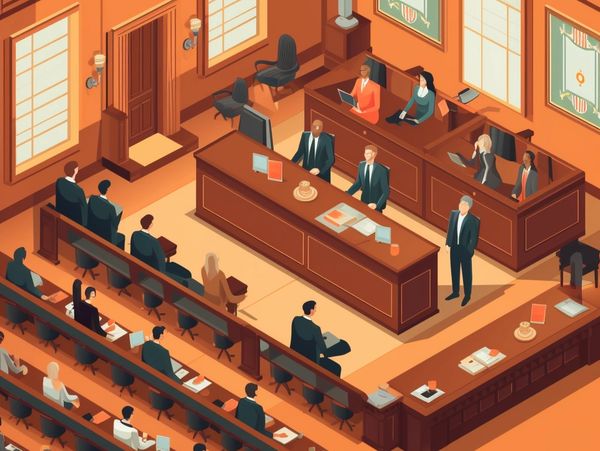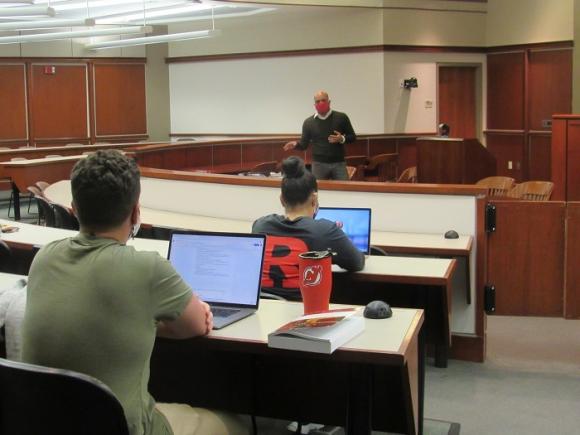How to Enhance Your Case with Compelling Trial Presentations: Professional Tips for Lawyers
How to Enhance Your Case with Compelling Trial Presentations: Professional Tips for Lawyers
Blog Article
Browsing the Intricacies of Trial Presentations: Tips for Seamless Delivery and Compelling Debates
In the realm of lawful proceedings, the art of test presentation stands as a critical factor of success. As lawyers browse the detailed web of courtroom characteristics, the capability to seamlessly deliver arguments and proof while astounding the jury's attention ends up being critical. The complexities intrinsic in trial presentations call for a delicate balance of ability, approach, and skill. By honing techniques that make certain a polished delivery and crafting engaging disagreements that reverberate with the audience, lawful specialists can considerably boost their campaigning for. In a globe where persuasion preponderates, grasping the intricacies of test discussions is not simply an alternative yet a need for those seeking to prevail in the court.

Comprehending Test Purposes
To efficiently browse a test, it is important to have a clear understanding of the goals that require to be achieved. Before entering the court room, legal teams need to define their objectives and wanted results. These objectives offer as leading principles throughout the trial, forming methods and affecting decision-making processes.
Recognizing test objectives involves a detailed analysis of the case, legal criteria, and the customer's benefits. Trial Presentations. It calls for a thorough assessment of the truths, determining vital problems, and anticipating possible difficulties. By establishing measurable and certain goals, lawyers can customize their disagreements and discussions to straighten with the preferred outcomes
Moreover, a clear understanding of trial goals makes it possible for legal teams to focus on proof, witnesses, and lawful debates efficiently. It enables the advancement of a meaningful story that resonates with the discretionary, enhancing the total instance presentation.

Organizing Evidence Effectively
Having a clear understanding of trial purposes lays the foundation for arranging evidence properly in lawful proceedings - Trial Presentations. By straightening the discussion of proof with the desired end results of the trial, legal groups can strengthen their arguments and improve their persuasiveness. One critical element of arranging evidence is classification. Grouping evidence based on motifs or significance to particular lawful aspects can aid simplify the presentation and make intricate details more digestible for the judge or court.
One more trick component in arranging proof properly is establishing a rational flow. Offering proof in a sequential and coherent manner can help develop a compelling narrative that sustains the legal debates being made. Furthermore, utilizing visual look at this now help such as graphes, timelines, or graphs can further improve the company of evidence and assist in clarifying intricate relationships or series of events.
In addition, ensuring that all evidence presented is acceptable and pertinent to the situation is important. Inadmissible or unnecessary proof can interfere with the strength of the argument and potentially harm the integrity of the here and now celebration. A careful review and selection process should be undertaken to consist of just the most legitimately audio and impactful evidence in the trial discussion.
Crafting Convincing Narratives
Crafting engaging stories plays a crucial role in providing persuasive arguments during legal process. When creating a narrative for a trial discussion, it is crucial to develop a clear storyline that highlights essential factors and attaches them in a meaningful manner. By weaving together proof, testimony, and lawful debates into a convincing and cohesive story, lawful experts can effectively advocate for their customers and raise the possibility of a favorable result in the court room.
Understanding Visual Help
Reliable use visual help is key to boosting the influence and quality of trial discussions. Aesthetic help, when utilized purposefully, have the power to simplify complicated info, strengthen bottom lines, and leave a long lasting perception on the discretionary. To understand visual aids in test discussions, it is critical to make certain that they are clear, succinct, and pertinent to the arguments being made.
When including aesthetic aids, such as graphes, pictures, graphs, or timelines, into a test discussion, it is vital to keep them aesthetically appealing yet expert. The visuals should match the spoken disagreements, giving an aesthetic representation of the info being gone over without overwhelming the audience with unnecessary details.
Additionally, exercising with the aesthetic aids in advance is vital to make certain a seamless shipment during the trial. Familiarizing oneself with Visit Website the material, transitions, and timings of each visual help can assist maintain the circulation of the presentation and protect against technological glitches that might occur.
Providing Impactful Closing Arguments
A compelling closing disagreement offers as the end result of a trial discussion, encapsulating the core narrative and convincing the judge and court in the direction of a favorable decision. Begin by outlining the major arguments that support your customer's placement, highlighting why the proof provided throughout the trial sustains your narrative.
In redirected here addition, incorporating psychological allure can further enhance your closing disagreement. Inevitably, a well-crafted closing debate need to leave a long lasting impact, compelling the judge and jury to rule in your client's support.
Conclusion
In verdict, understanding test discussions entails understanding objectives, arranging proof, crafting narratives, utilizing aesthetic help, and providing impactful closing debates. By implementing these strategies successfully, attorneys can offer their situation perfectly and make compelling disagreements in the court room. It is essential to browse the intricacies of test discussions with precision and ability to accomplish success in legal process.
By straightening the presentation of evidence with the wanted outcomes of the test, legal teams can reinforce their disagreements and boost their persuasiveness (Trial Presentations). To grasp visual aids in test discussions, it is vital to ensure that they are clear, concise, and relevant to the debates being made
An engaging closing argument offers as the culmination of a trial presentation, encapsulating the core story and persuading the court and court in the direction of a beneficial choice. Begin by outlining the primary arguments that sustain your client's placement, emphasizing why the evidence presented throughout the trial supports your narrative.In final thought, mastering test presentations includes understanding purposes, organizing proof, crafting narratives, using aesthetic help, and supplying impactful closing debates.
Report this page